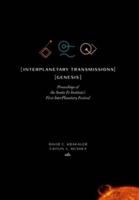Publisher's Synopsis
In the redesign of the Space Shuttle solid rocket motor following the Challenger accident, the field and nozzle-to-case joints were designed to minimize gap opening caused by internal motor pressurization during ignition. The O-ring seals and glands for these joints were designed both to accommodate structural deflections and to promote pressure assisted sealing. The resiliency behavior of several candidate O-ring materials was evaluated for the effects of temperature and gap opening rates. The performance of three of the elastomeric materials was tested under the specific redesign gap opening requirement. Dynamic flexure conditions unique to launch produce low frequency vibrations in the gap opening. The effect of these vibrations on the ability of the O-ring to maintain contact with the sealing surface was addressed. The resiliency of the O-ring materials was found to be extremely sensitive to variations in temperature and gap opening rate. The top three elastomeric materials tracked the simulated solid rocket booster (SRB) field joint deflection at 75 and 120 F. The external tank/SRB attach strut load vibrations had a negligible effect on the ability of the O-ring to track the simulated SRB field joint deflection. Lach, Cynthia L. Langley Research Center NASA-TP-3226, L-17023, NAS 1.60:3226 RTOP 505-63-50-03...












